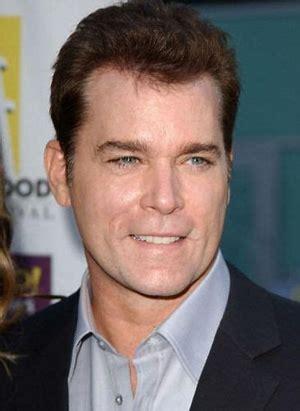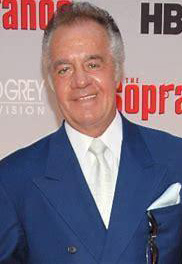Actor Lon Chaney Sr, who specialized in macabre horror-film roles in the 1920s, appeared in one film titled, The Unholy Three. It was a 1925 melodrama about three circus performers who join forces to commit con jobs and burglaries. And if you’re familiar with the old saying, “Celebrity deaths come in threes,” you’ll know that America had three of them the past few weeks, all actors well-known for playing Italian American mobsters: Ray Liotta (Goodfellas), James Caan (The Godfather) and Paulie Sirico (aka Paulie Walnuts on The Sopranos).
To quote Marc Antony via Shakespeare: “I have come to bury them, not to praise them.”
Lest that sound harsh, I hasten to explain that, unlike Antony, whose motives were a bit ironic (he attempted – and succeeded – in winning over hostile Roman crowds at the late dictator’s funeral), mine are flatly literal and a bit more metaphorical: I do wish to bury them, knowing full well that the images these actors created of Italian American men – as amoral, illiterate, and violent – will live on in popular culture. I am attacking their wayward role choices, not them.
“The good men do is oft interred with their bones,” to continue with Marc Antony’s speech. When it comes to portraying Americans of Italian descent, however, what good did the “Unholy Trio” of Liotta, Caan and Sirico do?

Let’s take Liotta. After he died, the rest of America learned what we activists long knew that he wasn’t even Italian. He was adopted by a loving Italian couple and took their family name. His birth mother, who was eventually tracked down years ago, related that Liotta was largely Scots or Scots-Irish (that is, a hillbilly). So what did Liotta do via his film career to honor the Liotta family? He played violent Italian thugs and corrupt Italian cops.
I have to quote Shakespeare again, this time from King Lear: “How sharper than a serpent’s tongue it is to have a thankless child.”
As for Caan, he came from a long tradition of Jewish American actors who “made their bones” endlessly promoting the Italian thug image (Paul Muni in Scarface and Edward G. Robinson in too many films to mention, starting with Little Caesar). Though he hobnobbed with real-life Italian low-lives, he also grew up in a mixed New York neighborhood where he also observed Irish and Jewish hoodlums at work. Somehow, Caan never managed to pay homage to those ethnic role models.

And Sirico? He was close to the real thing, a petty thug who actually served 20 months in Sing Sing in the early 70s. While he was in prison, a local acting troupe visited and Sirico caught the acting bug. He then transferred his new passion into playing – what else? – Italian thugs. No Shakespeare for Mr. Sirico. More like ‘Method Acting for Mugs.’
Incredibly, Sirico’s younger brother, Robert, is a Catholic priest, and a fairly infamous one: He left the Church in the early 70s, became a Pentecostal hippie minister who catered exclusively to gays (he also publicly declared himself gay), then returned to the Church a decade later and founded (in 1990) the Action Institute for the Study of Religion and Liberty in Grand Rapids, MI, a think tank which promotes Judeo-Christian values within the free market system.
(No respect to the dead, but the younger Sirico’s life would make a much more compelling series than The Sopranos.)

This ‘Roman triumvirate’ of actors essentially piggy-backed off the success of Francis Ford Coppola’s 1972 film, The Godfather, which, in case you didn’t know it, is celebrating its 50th anniversary this year. Thanks to Coppola’s artfully defamatory magnum opus, Liotta, Caan and Sirico had long, successful careers, milking stereotypes for decades.
The saddest part in reading their obits is the almost wistful tone by writers and reporters. It’s almost as if the media is saying goodbye to dear, departed friends. What they’re really lamenting is the fading of gross, anti-Italic images which they can guiltlessly enjoy. Today’s more enlightened era has put a cork in any future stereotyping – of other ethnics, that is.
Who will become the new “bad guys” in movies and TV shows? What kind of self-flagellation will the media engage in should Francis Ford Coppola (83), Al Pacino (82) and Robert De Niro (79) be the next ‘Unholy Three’ to pass on?
In his most famous role as the Phantom of the Opera (1923), Lon Chaney Sr. darkened his eyes, put fishhooks in his nose, and popped grotesque false teeth into his mouth. It was said that audiences at the time fainted at the sight of his face after the heroine in the film removed the phantom’s mask.
Liotta, Caan and Sirico didn’t go that far, but they certainly didn’t make any attempts to balance their ugly mob roles with heroic, or even interesting, ones of Italian Americans. They had the power to do so, or to at least try.
I conclude again with Master Shakespeare: “What fools these mortals be.” -BDC

As a member and contributor to the Italic Institute for many years, this is what I find lamentable within our community, in ascending order. 3) The images and history described here are an ironclad fixture in the American and largely the world zeitgeist. 2) The Italic Institute is a lone voice crying in the wilderness to correct this inaccurate, ethnic defamation which could never survive today’s climate of politically correct, woke sensitive, and cohesively protected heritages. 1) We are not left unmolested in our pursuits, but indeed subject to ridicule on a good day, or expletives from DeNiro on a bad one.
Yes, yes, and yes.
All excellent (and accurate) points.
Liotta played a negative Italian character in a family movie too (Hubie Halloween by Adam Sandler).
Yes, he played one of the main character’s tormentors.
Liotta was 65 years old at the time–a senior citizen–and he’s STILL the “heavy.”
Luckily, COVID hit the year the film was to be released so it died with a whimper.